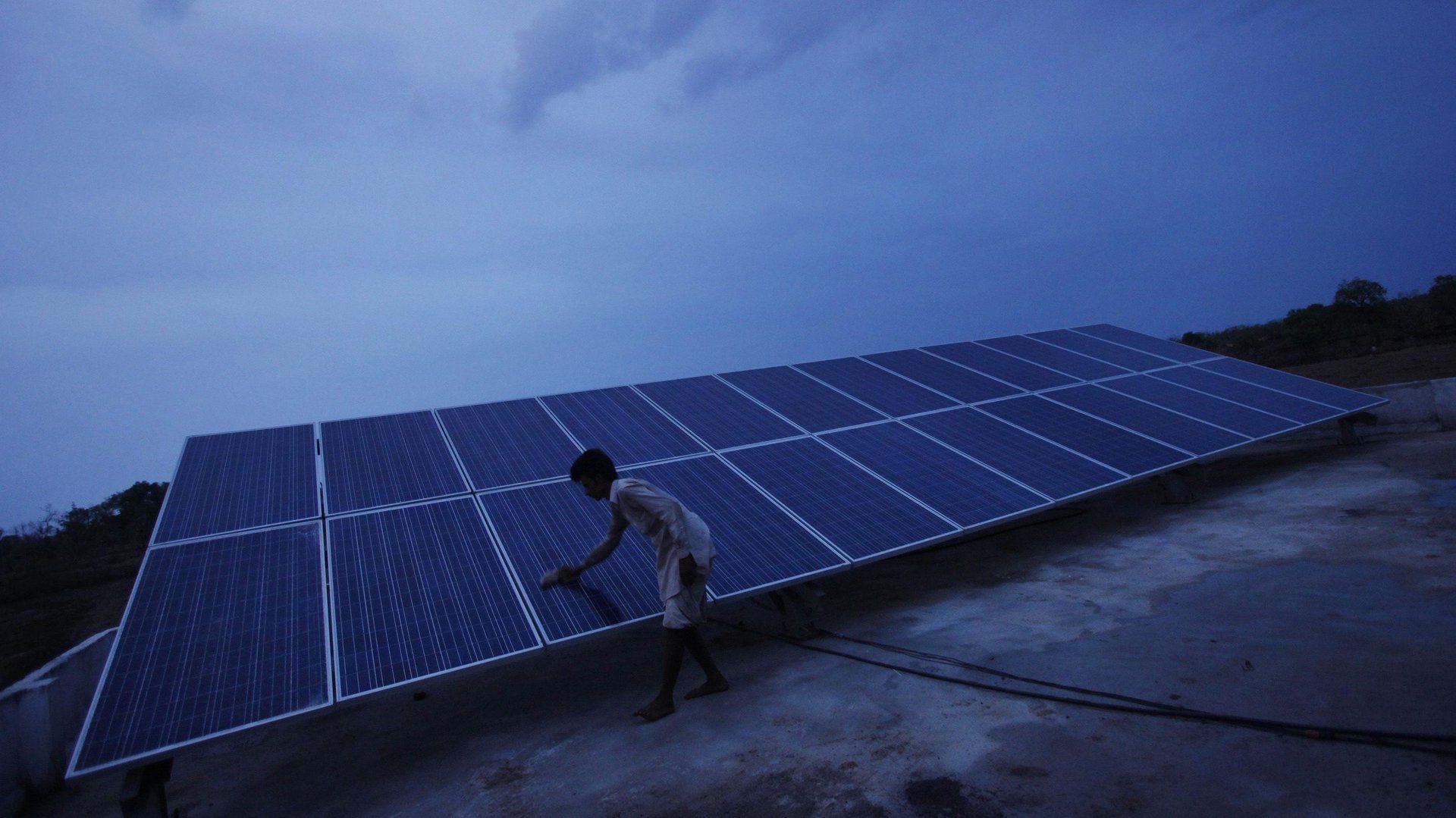Cheaper loans could take solar power to more rooftops in India
India’s solar capacity addition target of 100 gigawatts (GW) is expected to face serious challenges if the current sluggish growth in rooftop solar is not addressed. Of the overall target, 40 GW is proposed to come from the rooftop solar segment. However, the capacity as on date remains at 4 GW. To meet the 2022 target, there must be capacity addition of 9 GW every year starting now.


India’s solar capacity addition target of 100 gigawatts (GW) is expected to face serious challenges if the current sluggish growth in rooftop solar is not addressed. Of the overall target, 40 GW is proposed to come from the rooftop solar segment. However, the capacity as on date remains at 4 GW. To meet the 2022 target, there must be capacity addition of 9 GW every year starting now.
This is a tall ask for an industry plagued by limited consumer awareness and challenges with intra-government coordination, institutional priorities, and cumbersome processes. In addition, the absence of customised financing options is a major stumbling block in mainstreaming rooftop solar in India.
Good loans, bad terms
In 2015, to encourage the uptake of loans in renewable energy, including solar rooftop, the Reserve Bank of India (RBI) included the sector in the priority sector lending (PSL) norms. As per the norms, renewable energy loans of up to Rs10 lakh ($14,497) for individuals, and up to Rs15 crore for other categories (like the small and medium scale commercial and industrial categories), were made available in order to facilitate uptake of smaller valued loans. This move was meant to create a market and facilitate renewable energy projects across residential and non-residential users in India.
In this scenario, when a residential consumer approaches a bank for a rooftop solar loan, it is provided as “standalone” loan or a “top-up” to an existing home-improvement loan. However, an analysis of the loan schemes offered by leading banks in India revealed three problems related to the interest rates and collaterals they required for approval.
First, the rates of interest offered to the customers were on the higher side in both standalone and top-up loan cases. If a customer applies for a standalone solar loan, the interest rate could vary between 9.3% (for Punjab National Bank) to 16% (for IDBI bank) which are typically higher than the top-up loans. Top-up loan itself is often renegotiated at higher interest rates from the existing home-improvement loan rates. So, in both cases, loans for a solar project often turned out to be costlier than other loans.
Secondly, the terms of loans for solar rooftop are largely uniform across the country, and do not account for relevant regional variations—for example, in electricity tariff rates, net-metering rates, or financial settling mechanisms—which creates different cost structures and payback periods.
Such universal norms of assessment for loan requests could make them unattractive to some customers, as they tend to peg their calculations against electricity tariffs retrospectively, to arrive at the net savings they will enjoy (in the future) after installing solar, which forms the basis for the decision to install rooftop solar. Tailoring the loans appropriately, based on electricity tariffs and monetised value of savings made by exporting surplus electricity units to the grid could make it a more viable option.
Finally, most banks require that loan seekers must mortgage their house as collateral, which often proves counter-productive as interested customers view this as a disproportionate demand. The loan for renewable energy projects is usually for a few lakhs of rupees, when the value of their house could be several times that amount.
A step back
Recently, RK Singh, the minister of state (independent charge) for power and new and renewable energy, called for the removal of PSL limit for the renewable energy sector. This means the limits that facilitated small loans for renewable energy under the PSL norms would come to an end, opening up the sector for loans of higher value. This move could potentially dry up the loans provided to the residential segment for renewable energy.
When the RBI included renewable energy within the PSL mechanism, its main objective was to ensure financial inclusion, so that small scale renewable energy projects, till then considered an unattractive lending option, got adequate financing to meet the national target. In the specific context of the residential solar sector, small loans had the potential to boost the sector, provided the process was not cumbersome, and the rates of interest were attractive.
To meet the target of 40 GW residential rooftop solar by 2022, the government should try to promote rooftop solar for as many potential households in the country as possible. An accessible model of financing is an important prerequisite for the successful uptake of rooftop solar on a large scale. The RBI’s policy on PSL could have been an important first step in this goal.
Way forward
As per the current policy, the existing central government subsidy and customised financial options based on the electricity tariff and net-metering benefits could help determine a modest rate of interest for rooftop solar loans.
As the residential rooftop solar segment is a diverse market, loans to this sector need to be rethought keeping in mind the unique characteristics of the product. An inclusive and well-designed loan scheme, along with ease of access, simple and innovative assessment processes, and the retention of PSL could spark the interest of residential energy consumers and go a long way in accelerating the demand for renewable energy in India.
We welcome your comments at [email protected].